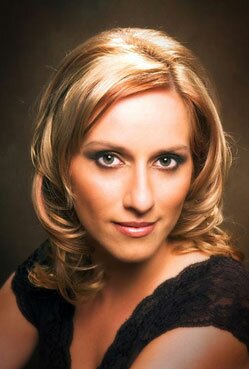| Photography Tips For Taking Basic Studio Portraits |
 Buy-n-Shoot.com site contributor: Buy-n-Shoot.com site contributor:Total-Image Magazine By Shelton Muller It is not unusual for amateur photographers to want to try their hand at studio portraits, but without the studio or the lighting equipment to do so it may appear impossible. Actually, portraits in the home are not difficult and often the equipment is easier and cheaper to obtain than you might think. Professional photographer, Shelton Muller, explains… For many of us, the thought of producing a professional portrait is a little daunting. But the truth is that often the most beautiful portrait is one that has been taken using very simple methods. Lighting is usually the first consideration and a single light source is often the most appropriate and easiest to use. This source can be as simple as window light. The great Masters of portrait painting such as Rembrandt were skilled at the use of window light and reflectors. It was no different for the first photographers who would ask their subjects to sit still for up to a minute in order to obtain a portrait using only window light. The single main light source is still considered the most viable option for portraits and is used by even the most skilled professional photographers. Place your subject a few feet away from the window and make sure you don’t include the window in the picture. It is a distraction. Set your camera up on a tripod if you can. If you have one, a gold or white reflector should be placed to reflect light back on to the shadow side to create shape and mood and also to make sure you have details in the shadows. You can use a commercially available reflector or simply make your own using some custom wood or cardboard. In an emergency – anything that softly and correctly reflects the main light source will suffice. A white sheet would be a fine reflector, as would a large piece of Styrofoam. The reflector will usually need to be quite close to the subject if it is to be effective, just make sure it doesn’t appear in the picture. However, window light is not always available and neither is it always appropriate or correctly placed. You can use a flash but its effect is always unpredictable and if used straightforwardly it is far too harsh and unflattering for most portrait work. If you have to use flash, try bouncing its light off of a reflector, such as the white board you might have. You can use household lights too but these can get quite hot sometimes and you will need to diffuse their harshness through a soft white cloth or reflect it. If you are using a digital camera, set the white balance for tungsten lighting. Choice of background is also a question for those trying their hand at basic home portraiture. Avoid anything frilly, patterned and distracting and make sure you fill the frame with as much of the person as you reasonably can. After all, the picture is about the person, not the backdrop. A plain or mottled wall will work fine. You can also make your own backdrops if you wish but that really is a case of ‘easier said than done’! Whatever you use, try to put as much distance between it and your subject as you reasonably can. Often, your home’s own surroundings make a more natural setting and can be quite pleasant for portraits. Use a medium telephoto lens so that your subject is comfortable and you are not too close. Something around 3 times magnification is perfect and even compact digital cameras have zooms that extend to that degree. These lenses flatter the facial features and keep you a comfortable distance from the subject. If you can, use a tripod too. You will find your subject will relax as the session continues and usually the best photographs are those taken toward the end. Position your subject on a slight angle to the camera for more dimension and make sure it is a natural and comfortable pose. Place a chair on a 45 degree angle from the camera and ask your subject to sit on the same angle but perhaps looking over his or her shoulder into the lens. Then, they can even turn the chair around and straddle it. Vary your poses until you find something comfortable and natural for that person. Remember during this entire process that portraits are pictures of people and so the most important element is not the perfection of the pose or the skill of the lighting techniques you employ, but rather the combination of these and other elements which form to represent the subject in a favourable way. Too much concentration on technical perfection can be more stressful than necessary and actually detract from the mutual enjoyment of the process and the images themselves. Too much perfection can often be artificial and outrightly detracting. The greater the ease with which you light and pose your subject will often be more effective than hours spent stressfully perfecting every step. With just a few simple tips, you’ll see how simple this entire process can be, and you’ll have pictures you’ll treasure. |
















